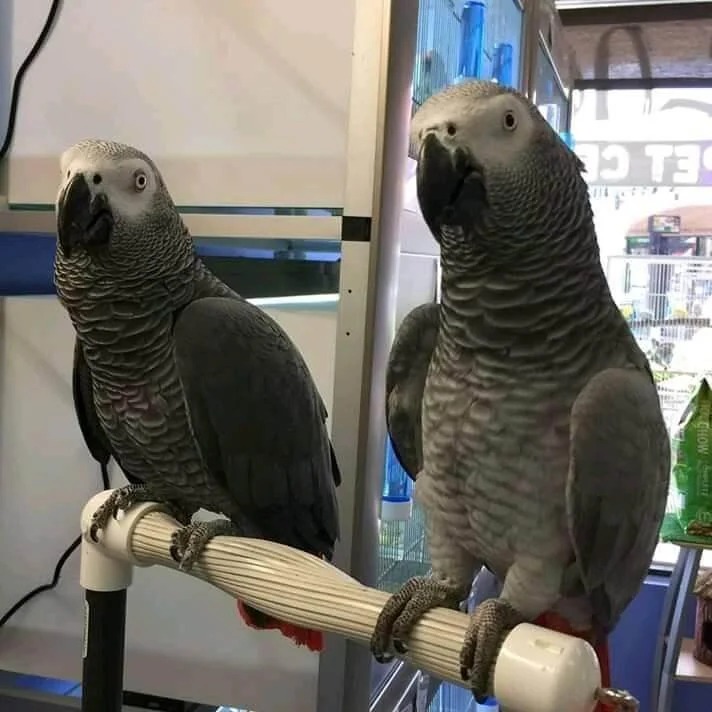- Foster
- 25-05-01 01:59
- 6
The 10 Scariest Things About Caring For An Grey Parrot
본문
Caring for a Grey Parrot: A Comprehensive Guide
timneh african grey parrot parrots, especially the female african grey parrot Grey parrot, are renowned for their intelligence, social nature, and distinct ability to simulate human speech. These fascinating birds make fantastic buddies for those who understand their particular requirements. The following guide highlights the vital aspects of taking care of a grey parrot, covering everything from habitat and diet to psychological stimulation and health care.
Summary of Grey Parrots
grey african parrot parrots are native to alex the african grey parrot jungles of West Africa and are highly smart animals with impressive cognitive capabilities. They can live for up to 60 years in captivity, making them a long-lasting dedication for prospective owners. With a strong social structure in the wild, grey parrots require adequate social interaction, mental stimulation, and an ideal living environment.
Table: Key Characteristics of Grey Parrots
| Characteristic | Information |
|---|---|
| Life-span | 40-60 years in captivity |
| Size | 12-14 inches in length |
| Weight | 400-600 grams |
| Color | Grey with an unique red tail |
| Social Nature | Highly social, takes pleasure in interaction |
| Intelligence | Exceptional analytical abilities |
| Singing Ability | Outstanding mimics, can establish large vocabularies |
Developing the Ideal Environment
A suitable home is crucial for grey parrots. Here are numerous aspects to think about when establishing their habitat:
Cage Requirements
- Size: Choose a cage that is at least 24 inches wide, 24 inches deep, and 36 inches high. Grey parrots need ample area to move around and extend their wings.
- Bar Spacing: Opt for a cage with horizontal bars spaced no greater than 3/4 inch apart to prevent escapes or injuries.
- Location: Position the cage in a social area where your parrot can connect with relative, however far from direct sunlight and drafts.
Perches and Accessories
- Range of Perches: Include perches of varying sizes and textures, such as natural wood, to promote foot health.
- Toys: Provide different toys, consisting of puzzle toys, ropes, and chewable products to keep them engaged.
- Food and Water Bowls: Ensure your baby african grey parrot for sale parrot has access to fresh food and water every day, and utilize quickly cleanable bowls.
Nutrition: Feeding Your Grey Parrot
A balanced diet is vital for ideal health. A grey parrot's diet need to consist of:
Pellets: High-quality pellets need to make up about 60-70% of the diet. Select a brand created particularly for parrots.
Vegetables and fruits: Fresh vegetables and fruits ought to be offered daily. Consider options such as:

- Apples (without seeds)
- Carrots
- Broccoli
- Spinach
- Berries
Nuts and Seeds: Treats can consist of nuts and seeds but should not exceed 10% of the diet due to high-fat material.
Calcium Source: Calcium is vital for bone health. Offer cuttlebone or calcium obstructs to support their dietary needs.
Mental Stimulation and Social Interaction
Grey parrots are understood for their intelligence, so supplying an environment that cultivates mental stimulation is important. Engage them with interactive play and social activities.
Techniques for Mental Stimulation
- Training Sessions: Every day, hang out training your grey parrot to find out new techniques or words. This not only supplies psychological exercise but likewise strengthens the bond between you and your bird.
- Toys: Rotate toys regularly to keep their environment fascinating and engaging.
- Social Interaction: Encourage interaction with relative or other pets; grey parrots thrive on social characteristics.
Healthcare: Regular Checkups
Routine veterinary care is important to guarantee your grey parrot's health and durability. Key healthcare practices consist of:
- Annual Checkups: Schedule annual gos to with a bird veterinarian for checkups, vaccinations, and to monitor total health.
- Look for Signs of Illness: Be mindful to changes in behavior, hunger, or droppings, as these can suggest health concerns.
FAQs
1. How frequently should I clean my grey parrot's cage?
Cages must be cleaned up daily to ensure health. More comprehensive cleaning should be done weekly, including washing toys and perches.
2. Can grey parrots be left alone during the day?
While they can be left alone for a few hours, it is dissuaded to leave them isolated for extended periods. Preferably, they should have day-to-day social interaction.
3. How do I train my grey parrot to talk?
Start by repeating words clearly and regularly. Use favorable reinforcement, such as deals with, to motivate them to mimic expressions.
4. What should I do if my grey parrot loses plumes?
Feather loss can be due to several factors, including molting or stress. If you observe extreme plume loss, seek advice from a bird vet.
5. Are grey parrots excellent pets for novice bird owners?
Grey parrots need specific care and attention, making them better matched for experienced owners. However, anyone prepared to find out can offer an ideal home.
caring for an grey parrot (please click the up coming document) for a grey parrot needs dedication, knowledge, and attention to their physical and psychological needs. By investing time in creating an enriched living environment, supplying a balanced diet plan, and guaranteeing regular veterinary care, owners can enjoy the vibrant and appealing companionship that grey parrots offer. With the ideal technique, these intelligent birds can flourish and become treasured family members.


